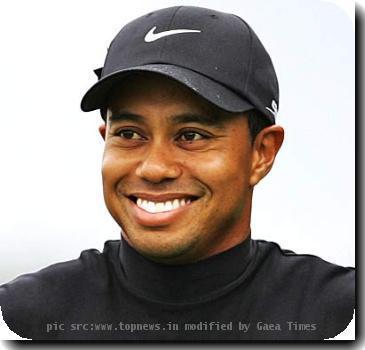Golf on the rocks: What a perfect way to fall at Pebble
By Eddie Pells, APTuesday, June 15, 2010
Picturesque Pebble can be a rocky road
PEBBLE BEACH, Calif. — Henrik Stenson watched his ball bounce hard on the left side of the tightly mowed 18th fairway, skip over the rough, off the cliff, then onto the rocks down below.
A few moments later, he went to a place nobody wants to be when they start keeping score later this week.
He picked his way down the rocks and seaweed, found a good place to stand near the water 50 feet below, jumped and pirouetted a few times to miss the lapping waves, then clanked a wedge back up and onto the grass.
Welcome to the U.S. Open at Pebble Beach — the toughest test in golf at one of the most scenic settings in the world.
“I had to move away a couple times. Once, there were little pebbles around the ball, another time, there was a pile of debris,” Stenson said. “But I got a club on it. If I hit a ball down there when the tournament starts, I’d have to consider going down there.”
Unlike most of the contenders in the 156-man field, Stenson will not have to deal with pre-wired notions of what Pebble “should” play like, or “normally” plays like. This is the Swede’s first time at the course that hosts the PGA Tour’s star-studded pro-am each February, but becomes a much different beast every 10 years or so when the national championship comes to town.
Balls that plugged into the fairway in February for Bing Crosby’s old clambake hit hard and spin forward in June.
Shots that would have landed softly on the greens four months ago are now vulnerable to careening off.
Rough that used to give way like butter is now four, five inches tall at some points — something of a concession to the U.S. Open norm, actually, because the greens at Pebble Beach are so uncompromisingly small.
“On a lot of these holes, you can hit a shot and be in the rough 5 feet from the green and you’ll be lucky to be putting after your next shot,” Stenson said.
K.J. Choi, a fourth-place finisher at this year’s Masters, spelled out a goal that only sounds plausible at the U.S. Open.
“I’m going to try to get through four rounds, and finish each day at par,” Choi said. “If I do that, that should be a pretty good score.”
The last time the U.S. Open was at Pebble, par didn’t stand a chance and neither did anybody not named Tiger Woods. In 2000, he shot a record 12-under par and won the tournament by 15 — a performance that goes down as the most dominating in the history of golf.
So much has changed, not only in the heavily detailed disorder of Woods’ personal life, but also in the finely planned details at Pebble Beach.
New bunkers have been added on Nos. 4 and 6 to tighten the landing areas. New tees have been added to lengthen four holes, including Nos. 9 and 10, which along with No. 8 run along the water and make up a stretch of possibly the three most picturesque holes in golf.
There’s a chasm of ocean separating the fairway from the green on No. 8, and the time the ball hangs over that gap is one of the longest, most harrowing few seconds in golf.
“You stand there, you watch it, you wonder if it’s ever going to come down,” said England’s James Morrison, who has the honor of playing his first career major this week at Pebble, a place where the wind can kick up and change the personality of almost any hole in an instant.
The most drastic change at the course that has charmed, befuddled and immortalized everyone from Jack Nicklaus to Jack Lemmon were the two trees planted in the middle-right of the fairway on the par-5 18th hole. They give players the possibility of being completely blocked if they try to play too far away from the left-hand side of the fairway. Hitting toward the left, of course, is the best way to reach the green in two. But play it too far left and you could wind up like Stenson — down among the fish.
It sets up the possibility of a big choice if someone comes to 18 on Sunday needing a birdie, something that has never happened at the U.S. Opens at Pebble.
Which isn’t to say Clint Eastwood’s course hasn’t produced its moments.
In 1972, Nicklaus hit a 1-iron on the par-3 17th, hitting the pin on the way to a birdie that gave him the second leg of the Grand Slam.
Ten years later, Tom Watson chipped in from the rough on No. 17 — one of the most iconic shots in golf — to pull away from Nicklaus for his sixth of eight majors. (The spot from where Watson hit the ball no longer exists, washed away by a storm that hit shortly after that year’s Open.)
In 1992, Tom Kite used his then-unique lob wedge to chip in on Pebble’s most famous hole — the much-posterized, 100-yard par-3 seventh.
Woods? Maybe the most memorable shot was one of the very few he missed in 2000, a snap hook into the ocean on No. 18, when he had come out early Saturday morning to finish his second round. A string of expletives followed, and then a weekend in which he redefined what golfing excellence means.
“I wouldn’t be surprised to see him play well, and I wouldn’t be surprised if he won,” said Rory McIlroy, who got his first PGA Tour win last month by firing a 62 in the final round at Quail Hollow.
Whether it’s Woods, Phil Mickelson or someone winning their first major, the way Lucas Glover did last year, Pebble Beach always paints a pretty picture.
“I’ve got to say, it’s one of the most scenic places in the world to play golf,” Stenson said. “Just some fabulous holes. Great views. You can see all the wildlife in the sea.”
And sometimes a few golf balls, too.
Tags: California, Events, Men's Golf, North America, Pebble Beach, Tiger Woods, United States

